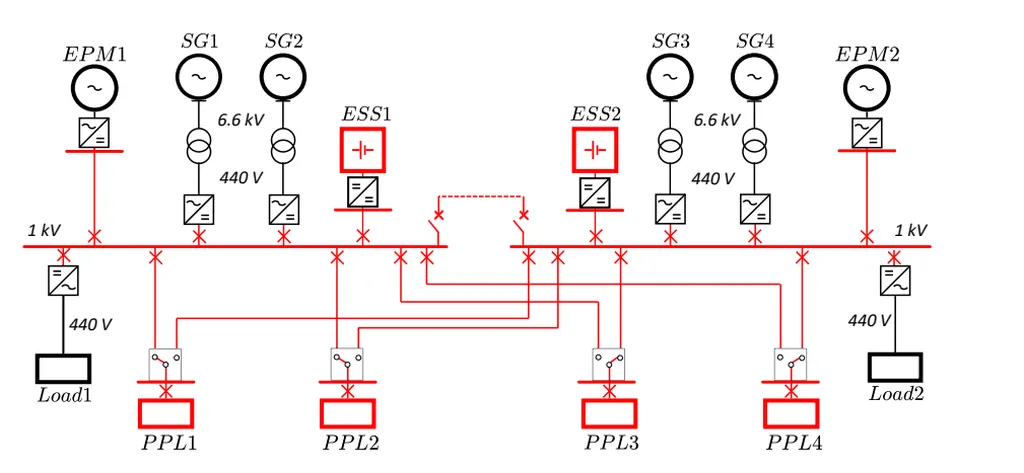Researchers from the University of Genova have published a preliminary assessment of shipboard power system architectures that integrate low-voltage direct current (LVDC) sections. This study, led by D. Roncagliolo, M. Gallo, D. Kaza, F. D’Agostino, A. Chiarelli, and F. Silvestro, explores the potential of LVDC systems in naval applications, offering a comparative analysis of three distinct grid topologies.
The researchers began by using an existing medium-voltage alternating current (MVAC)-low-voltage alternating current (LVAC) shipboard power system as a reference. They then evaluated three different configurations: a conventional MVAC-LVAC radial distribution with an added LVDC section, a fully radial LVDC distribution, and a zonal LVDC distribution. Each architecture incorporated key components such as synchronous generators, propulsion motors, energy storage systems, extra propulsive loads, and pulse power loads.
The study employed five performance indicators to assess the effectiveness of each architecture: weight, volume, technology readiness level, average system interruption duration index, and pulsed power loads interruption index. These metrics provided a comprehensive evaluation of the practical and operational implications of integrating LVDC sections into shipboard power systems.
The findings highlight the advantages and challenges associated with each topology. The conventional MVAC-LVAC radial distribution with an additional LVDC section offers a balanced approach, leveraging existing infrastructure while incorporating the benefits of LVDC technology. This hybrid model may be particularly suitable for gradual transitions, allowing for incremental upgrades without extensive overhauls.
In contrast, the full LVDC radial distribution presents a more radical shift, potentially offering greater efficiency and performance improvements. However, this approach also comes with higher implementation challenges, including the need for new infrastructure and higher initial investment. The zonal LVDC distribution, on the other hand, provides a flexible and resilient architecture, which could enhance system reliability and fault tolerance.
The researchers emphasize that the choice of architecture depends on specific operational requirements and strategic priorities. For instance, systems prioritizing reliability and fault tolerance might benefit from the zonal LVDC distribution, while those aiming for gradual integration could opt for the hybrid MVAC-LVAC with LVDC section.
This study provides valuable insights for naval architects and engineers, offering a roadmap for integrating LVDC technology into shipboard power systems. As the maritime industry continues to evolve, the adoption of LVDC sections could play a crucial role in enhancing the efficiency, reliability, and sustainability of naval vessels. The researchers’ work sets the stage for further exploration and development in this promising area, paving the way for innovative solutions that meet the demands of modern maritime operations. Read the original research paper here.

